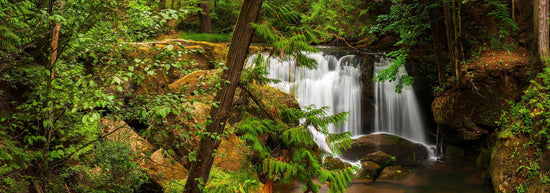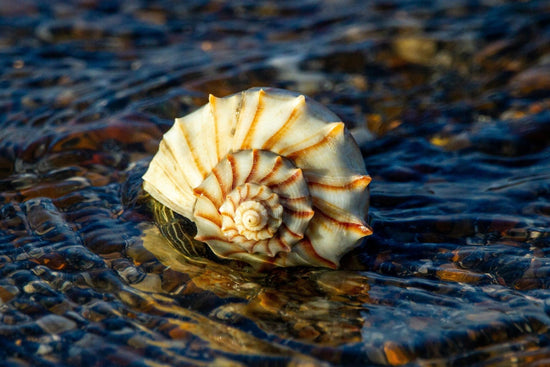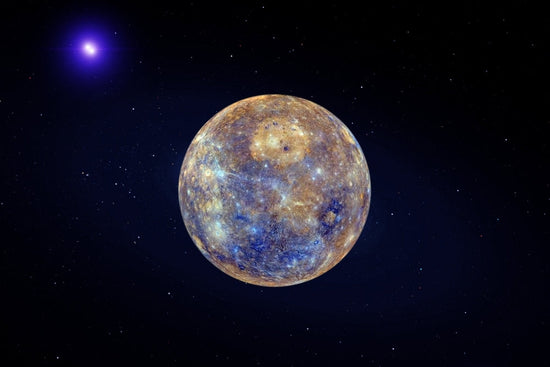We set up camp along the west coast of San Juan Island on a rocky hillside that overlooks a popular orca feeding ground. It's a hot July day, and restless people are beginning to emerge from lockdown to seek comfort in nature. I peer through the lighthouse education center window and see a sign that reads “ J-pod, traveling North, last night.”
This is not my first time waiting for the Southern Resident Killer Whales. I have come here multiple times every summer for years in hopes of seeing them feed. I know that sometimes traveling North at night can mean traveling South in the morning, so I quickly run over to the North side of the lighthouse and set up my camera. Before I can even get my lens on, I spot the familiar black fins of J-pod coming South. As they approach, I see they have a young little orca in tow: J-56, Tofino. I line up my camera to take a picture just as the little baby orca breaches. She then does it over and over again, right in front of the lighthouse, like she is putting on a show for all the spectators. Everyone watching is laughing with joy and in that moment, we feel hope again.
J-56 (Tofino) Breaching of the coast of Lime Kiln State Park on San Juan Island.
Photo By Hannah Gabrielson
Though unlikely, I like to think Tofino is celebrating in the above photo. Celebrating the fact that, at that time, four female Southern Resident Killer Whales were pregnant, and she was about to have new baby orcas to play with. In the coming months J-45 would unfortunately lose her calf, but three healthy new orcas would be born.
In September 2020, J-35 (Tahlequah) had her third calf, J-57, a male called Phoenix, after the mythical bird that rises from its own ashes. This was a very emotional birth for many people in the Pacific Northwest, because Tahlequah's last calf didn't survive, and in August 2018, the world watched as she carried her dead baby on her nose for 17 straight days. This public display of grief rattled the world and showed many just how deeply orcas can feel.
Shortly after Tahlequah gave birth, J-41 (Eclipse) gave birth to a female calf J-58 (Crescent). These two babies brought the total to 74 Southern Residents at the end of 2020. In February of 2021, local scientists noticed a third newborn, this time born to L-pod. Befitting her name, L-86 - AKA Surprise! - surprised us all with a 4th calf, designated L-125 and yet to be named. This brings the total number of Southern Resident Killer Whales to 75. And while everyone loves to see cute baby animals, these babies are particularly important. They carry the weight of the entire species on their backs.
J-57 (Phoenix) emerging for a breath near San Juan Island. Photo by Snow McCormick-Scammell.
In 2005 the Southern Resident Killer Whales were listed as an endangered species in the United States. At that time, there were just 88 of them, according to Center For Whale Research who have been monitoring the whales since 1976. And since 2005, the SRKW population has continued to decline.
The SRKW’s population is directly connected to the number of Chinook salmon present in the summer months. When Chinook salmon populations are low, Orca whale mortality rates go up. Not only do more deaths occur, but the fecundity rate - the ability to produce live offspring - is reduced. When food is short, having babies is hard! Another factor is that SRKW hunt by echolocation, using sound waves to "see" their surroundings. And the last few decades, vessel noise has increased so much that constant interference from the hum of boats has made it hard for the whales to effectively hunt and communicate.
But 2020 was different. As humans were in locked-down, the sea became a little quieter, giving the whales a much needed break. Research about how 2020 has affected them is still being analyzed, but having three healthy new babies is a very positive sign.
There is a long way to go on the “current” to recovery for the Southern Residents. They still teeter on the brink of extinction. But if we have learned anything from these amazing animals, it is resilience. Everything has been against them and they continue to persevere. These babies do not mean their problems are solved, but they are a spark in the ashes, hoping to set a blaze.

You can help support the awesome environmental non-profit Oceana when you buy any of these vegan printed body soaps with art by local artist Jill Bliss. Oceana serves to make our oceans more biodiverse and abundant by winning policy victories in the countries that govern much of the world's marine life.





